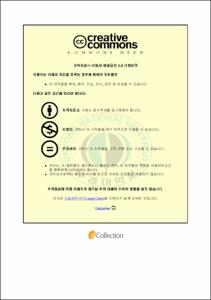Hygienic Analysis on Surimi Processing Plant in Busan
- Abstract
- The hygienic status of the surimi processing environment is a significant factor in the production of microbiologically safe and quality products in the industry. Quality of surimi products and the species type of microbial flora are the main factors for evaluating the hygienic status of surimi processing plant. To analyze the hygienic status of surimi products, the total number of microorganism and its species were investigated. Experimental surimi samples were collected from each place through the production line to examine the microorganism growth in each stage of production. Swab method was also used to examine the presence of microorganism in the equipment facilities and surrounding environment. The final products of surimi imported from other countries were also examined by collecting the sample randomly from the importing surimi company. To examine the number of microorganism, and their species, microorganisms were cultivated by using 3M Petrifilm for counting the total number of microorganism and pathogenic bacteria species such as E. coli, Staphylococcus, and Listeria monocytogenes. The total numbers of microorganism found from the processing plant were much more than the limitation standard for all the stages from raw material to final products. Pathogenic bacteria were also found for the stage of mince fish, first flesh wash and pasteurization, but the number was reduced from stage to stage down the processing line. The total of microbial load found from the equipment tools by using swab method was higher than the limitation standard and E. coli was also found from a worker’s hand but the microbial load was lower than the limitation standard. For the imported surimi product, the total microbial load in some samples was equal to the limitation standard whilst in other samples it was lower than the limitation standard. The microbial load from the imported American surimi product was completely lower than the limitation standard as well as the coliform bacteria also found in those products.
- Issued Date
- 2012
- Awarded Date
- 2012. 2
- Type
- Dissertation
- Publisher
- 부경대학교
- Department
- 대학원 국제수산과학협동과정
- Advisor
- 양지영
- Table Of Contents
- Table of contents i
List of Figures iv
List of Tables v
Abstract vii
1. Introduction 1
2. Objectives 3
3. Literature Review 4
3.1. General introduction of surimi 4
3.2. Indication on locate and transmit of contamination 8
3.2.1. Raw material 8
3.2.2. Personal hygiene 11
3.2.3. Pest control system 12
3.2.4. Processing equipment 12
3.2.5. Water 13
3.2.6. Washing technique in surimi process 14
3.2.7. Meat separation process 15
3.3. Pasteurization 16
3.4. Manufacturing of surimi processing 17
3.5. Sanitation and hygiene in processing plant 19
3.6. Microbial symptom 21
3.7. Perception of indicator organisms 23
3.7.1. Petri film technique of aerobic count for coli-form bacteria 23
3.7.2. Swab method 24
4. Materials and Methods 25
4.1. Sample collection 25
4.1.1. Domestic sample collection along the processing line 25
4.1.2. Sample collection of imported and domestic final surimi products 26
4.2. Preparation for bacteria count 27
4.2.1. Sample preparation 27
4.2.2. Medium preparation 27
4.2.3. Counting number of bacteria 27
5. Results and Discussion 29
5.1. Domestic surimi product 29
5.1.1. Environmental hygienic status in surimi processing plant 29
5.1.2. Hygienic state in surimi product 35
5.2. Imported surimi products 49
6. Conclusion and Recommendation 56
Acknowledgements 58
References 59
- Degree
- Master
- Appears in Collections:
- 글로벌수산대학원 > 국제수산과학협동과정
- Files in This Item:
-
-
Download
 Hygienic Analysis on Surimi Processing Plant in Busan.pdf
기타 데이터 / 1.11 MB / Adobe PDF
Hygienic Analysis on Surimi Processing Plant in Busan.pdf
기타 데이터 / 1.11 MB / Adobe PDF
-
Items in Repository are protected by copyright, with all rights reserved, unless otherwise indicated.